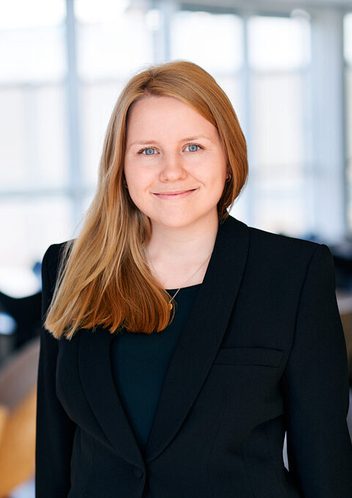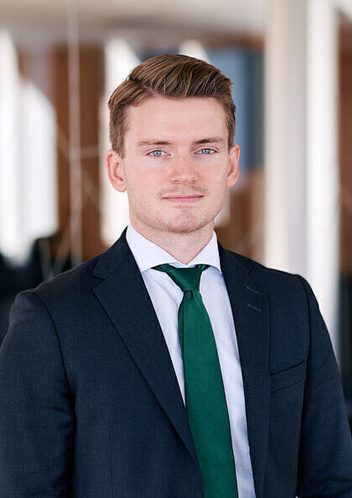
Inge Kristian Brodersen
Partner
Oslo
Newsletter
Published:
By Inge K. Brodersen and Paal-André Storesund
The development of inventions based on mathematical methods may enhance, or even create new, products within all types of industries in the future. Different types of simulations and analysis instruments are good examples of tools where mathematics often play a major role. Developing the correct mathematical algorithm can be both expensive and time consuming. Companies who put time and effort in such development should therefore consider legal protection for their creations.
Both the Norwegian Patent Act and the European Patent Convention clearly state that mathematical methods as such are not patentable since they lack technical character. However, the European Patent Office allows for the patenting of computer-implemented inventions that are based on mathematical methods. If the patent claim says that the mathematical methods are installed on a computer, the patent claim will not concern mathematical methods as such. The invention may therefore be patentable.
If the hardware is already known, then the application will be dependent on the mathematical methods installed on the computer to fulfill the requirements regarding novelty and inventive step.
In that case, the question to be assessed is whether the applicant is allowed to base the invention's novelty and inventiveness on the features utilizing mathematic methods. The main rule is that the assessment of an invention's novelty and inventive step only be based on features that contributes to the invention's technical character; the feature must have a technical purpose in context of the invention.
An overarching issue with computer-implemented simulations as such is that they only produce numerical data that do not form the basis for a direct interaction with external physical reality as part of the invention. The question is therefore if it is still possible for the mathematical methods to contribute to a technical purpose and with that the invention's technical character.
An important decision by the European Patent Office ("EPO") regarding these types of inventions, is G 1/19 (Pedestrian simulation) of March 2021. The decision gave an explanatory statement regarding a patent application for a computer-implemented simulation of the movement of an autonomous entity through an environment. The purpose of the simulation was to verify whether a design of a building, such as an avenue, is acceptable for evacuating large crowds of people. The invention distinguished itself from existing simulations and other prior art by modelling the individual pedestrian in the crowd, addressing the pedestrian's own intention of reaching a destination, a personal profile and a surrounding personal space in which the absence of obstacles is sought.
The EPO said that numerical simulations like this may be patentable if inventive step can be based on features contributing to the technical character of the claimed simulation method. Since the new and inventive part of the invention was based on the simulation's models, which imitate the real world by using mathematics, the EPO had to decide if these features contributed to the invention's technical character. The EPO therefore had to decide if such models can contribute to the invention's technical character even though the numerical data produced by the simulation do not form the basis for a direct interaction with the external physical reality.
As an important and principal guideline, the EPO stated that even though the computer-implemented simulation's models are based on mathematics, these models can still contribute to the invention's technical character if:
As with the specific patent application mentioned above, the guideline from G 1/19 (Pedestrian simulation) was applied further in the decision in T 0489/14 (Pedestrian simulation/BENTLEY SYSTEMS) of 26 November 2021, in which there was a substantive examination of the patent claim and consideration of the guideline given by the EPO in G 1/19 (Pedestrian simulation). When assessing if the patent claim specified a further technical use of the outcomes of the simulation, the board concluded that the patent claim did not explicitly or implicitly limit it to such a further technical use.
The potential use of data representing the behavior of a crowd moving through an environment, is not implicitly limited to technical purposes. This sort of data can, for example, be used in video games or for educational purposes – which both are non-technical uses. Neither of the appellant's auxiliary requests were able to make the patent claim pass this hurdle. Since the appellant had not explicitly mentioned a further use of the outcome limiting it to a technical use, the appeal of the decision refusing the appellant's patent claim, was dismissed by the board.
The outcomes in G 1/19 (Pedestrian simulation) and T 0489/14 (Pedestrian simulation/BENTLEY SYSTEMS) demonstrate that it is possible to patent computer-implemented simulations. There is little reason for limiting the use of the guideline strictly to simulations, and the guideline is likely to be of value for other computer-implemented inventions producing numerical data without a direct link to the physical world.
We believe both computer-implemented simulations and other inventions based on mathematical methods will continue to grow in value into the future. Knowing how to protect these types of inventions will therefore be a crucial competitive differentiator.

Partner
Oslo

Partner
Oslo

Partner
Oslo

Partner
Oslo

Partner
Oslo

Partner
Oslo

Senior Associate
Oslo

Senior Associate
Oslo

Partner
Oslo

Partner
Stockholm

Special Advisor
Stockholm
